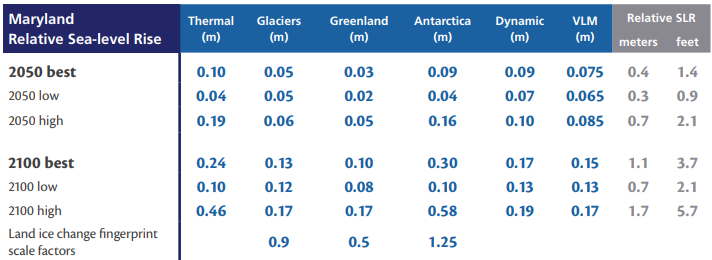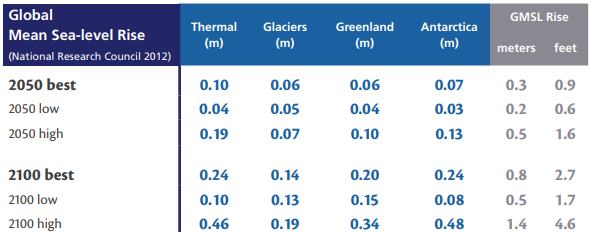Thermal expansion of the ocean volume is expected to make up the largest component of sea level rise throughout this century (MCCC 2013, IPCC 2014a). The Intergovernmental Panel on Climate Change (IPCC) states with high confidence that since the early 1970s, ocean thermal expansion and glacier mass loss from warming together explain about 75% of the observed global mean sea level rise (IPCC 2014b). According to projections in the Climate Change 2014: Impacts, Adaptation and Vulnerability, The Intergovernmental Panel on Climate Change (IPCC) Working Group II contribution to the IPCC 5th Assessment Report, thermal expansion accounts for 30-55 % of 21st century global mean sea level rise and glacier melt accounts for 15-35% (IPCC 2014a). However, as time goes on, the proportional contribution by the loss of mass of the Greenland and Antarctic ice sheets is expected to increase (NRC 2015). Steps taken over the next 30 years to control greenhouse gas emissions and stabilize global temperatures during this century will largely determine how great the sea-level rise challenge is for coastal residents in subsequent centuries. There is not much they could do then to slow sea-level rise because of the inertia of ocean warming and polar ice sheet loss (MCCC 2013).

